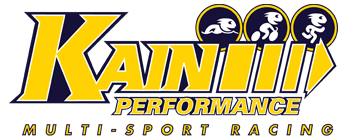If it seems that your next trade agreement will benefit from a Heads of Agreement, do not hesitate to contact us! Some agreements will include provisions requiring the payment of deposits or fees to further discourage a party from leaving the business. However, this is relatively rare. Their head of conditions should outline the parties` understanding of the key terms they will negotiate and how they intend to move these negotiations forward. Remember that even if your heads expressly state that they are not legally binding if English law applies to your negotiations, either party may be liable to the other party for any loss suffered as a result of misrepresentations or representations before or during such discussions. Coverage of misrepresentation is beyond the scope of this service, and if you have no doubt about possible liability, you should seek the advice of a legal expert. To access a specialized lawyer in a few simple steps, you can use our Ask a Lawyer service. As stated above, a document of the heads of agreement serves as the document of the registration. A clear written record of the negotiation can help in a legal dispute, especially if certain parts of the agreement are immediately binding, such as . B a confidentiality agreement.
In addition, it is not necessary to engage a lawyer in the development of a term. Therefore, it also saves legal fees before signing a full-fledged formal contract. Entering into terms provides you with a non-binding starting point for entering into the legal terms of a formal business agreement. We can help you understand the benefits of trading and agreeing on terms, and you can use our document compilation tool to create your own fully customized terms with just a few clicks. If the parties are confident that they have reached an agreement and the conditions are relatively simple, they are free to start drawing up a formal contract immediately. If you or your counterparty are unwilling or unable to agree on heads, this may indicate that negotiations on the following legally binding agreement are likely to be lengthy and/or unsuccessful. Depending on the trade agreement under negotiation, the content of an agreement varies considerably to reflect the key terms of the agreement. In Canada, the equivalent of heads of agreement is the letter of intent. The Canadian legal system recognizes two types of Letters of Intent (LOI)Download the CFI`s Model Letter of Intent (LOI).
A letter of intent describes the terms and arrangements for a transaction prior to the signing of final documents. Key points typically included in a letter of intent include: the overview and structure of the transaction, timing, due diligence, confidentiality, exclusivity: the weak letter of intent and the strong letter of intent. You should include a statement in your head that they should not be legally binding. You may also want to consider inserting the words “contracted” at the beginning of the document to make it clear that (if so) none of the terms in the letter have legal status. The use of this phrase will help create a presumption against the creation of a legally binding contract. A properly worded head of agreement is a non-binding document that sets out the main terms of a proposed agreement between the parties. From a business perspective, if a party refuses or fails to sign terms, it could indicate that they are not as committed to the agreement as you or that they are likely to change their position when it comes to negotiating legal documents. You are always free to continue discussions on such legal documents if your counterpart refuses or does not sign heads, but you should probably do so with caution. Without term titles, it`s easy for negotiations on the detailed legal terms of a trade deal to lose sight of. The chefs helpfully remind everyone involved of what was agreed upon from the beginning. If you skip them and dive straight into negotiating a legally binding agreement, it can be easy to lose sight of the original trade deal and renegotiate the points that were previously agreed. What are terms? Term titles are a legal document that is often signed in the early stages of a trade negotiation to facilitate business discussions.
Leaders typically set out the agreed key business points that form the basis of your ongoing negotiations, as well as a timeline for reaching a formal trade agreement. The head of conditions can also be called a memorandum of understanding, heads of agreement, letter of intent, term sheet or simply “heads”. What is a leader okay? This is another term for “mandate heads,” and it could also be called a letter of intent, a term sheet, a memorandum of understanding, or “heads.” Heads of agreements are often signed in the early stages of a trade negotiation to facilitate discussions. Agreements usually set out the main trade policy issues that form the basis for negotiations between the parties, as well as a timetable for the conclusion of a legally binding agreement. When do I have to enter the Terms? Conditions should be established as a starting point for legal discussions before the terms of a binding legal agreement are negotiated. The exercise of negotiation and polling heads ensures that you essentially have a business venture that you can then translate into a binding legal agreement. However, before you get into people`s minds or start other essential business discussions, you need to make sure you fill out a confidentiality agreement to protect your business and any confidential information that might be part of those discussions. .
